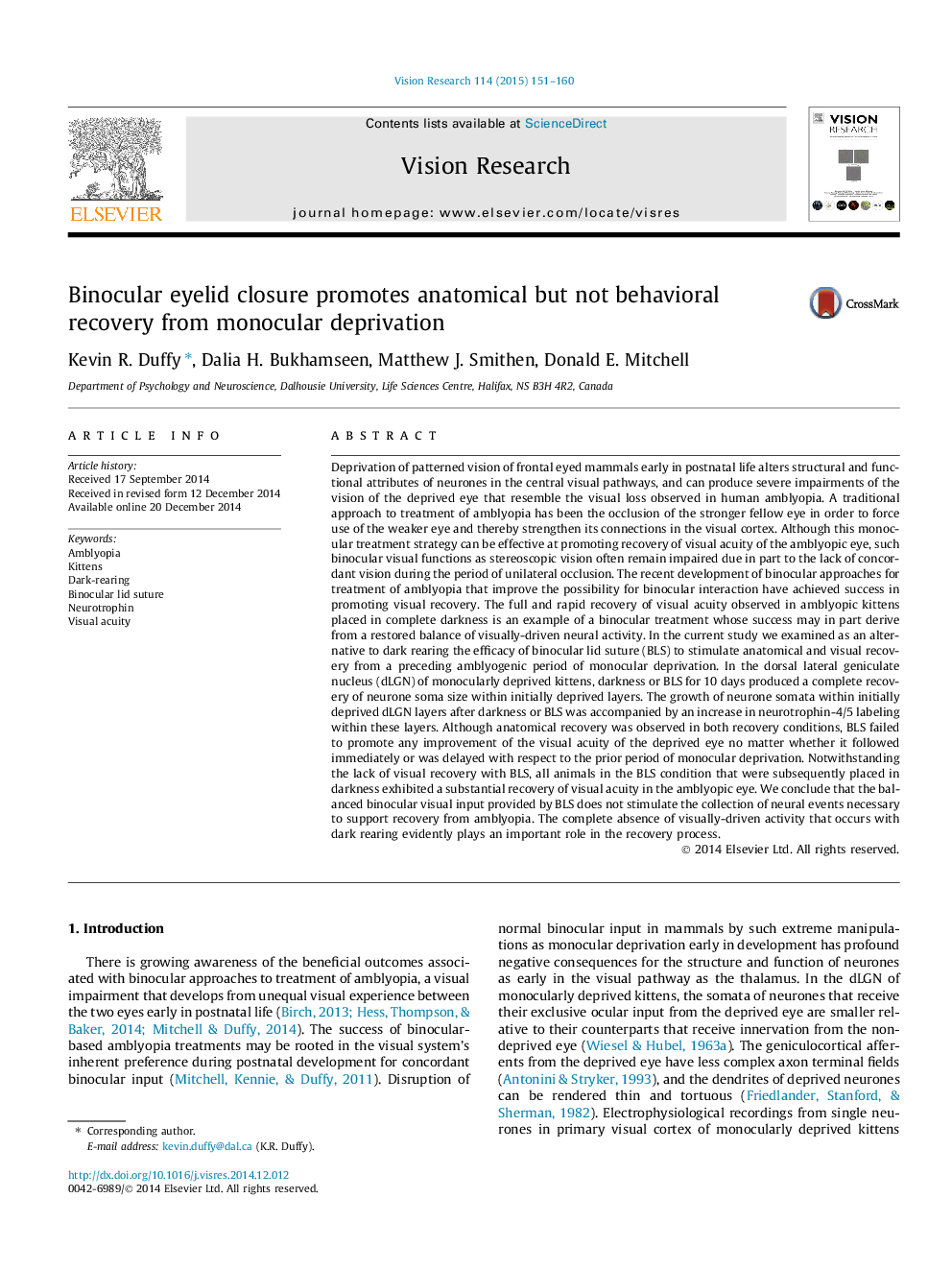| کد مقاله | کد نشریه | سال انتشار | مقاله انگلیسی | نسخه تمام متن |
|---|---|---|---|---|
| 4033608 | 1603183 | 2015 | 10 صفحه PDF | دانلود رایگان |
• Deprivation-induced atrophy recovered by darkness or binocular lid closure.
• Deprivation-induced loss of NT-4/5 recovered by darkness or binocular lid closure.
• Binocular lid closure does not stimulate recovery from amblyopia.
• However, a subsequent period of darkness stimulates full recovery from amblyopia.
Deprivation of patterned vision of frontal eyed mammals early in postnatal life alters structural and functional attributes of neurones in the central visual pathways, and can produce severe impairments of the vision of the deprived eye that resemble the visual loss observed in human amblyopia. A traditional approach to treatment of amblyopia has been the occlusion of the stronger fellow eye in order to force use of the weaker eye and thereby strengthen its connections in the visual cortex. Although this monocular treatment strategy can be effective at promoting recovery of visual acuity of the amblyopic eye, such binocular visual functions as stereoscopic vision often remain impaired due in part to the lack of concordant vision during the period of unilateral occlusion. The recent development of binocular approaches for treatment of amblyopia that improve the possibility for binocular interaction have achieved success in promoting visual recovery. The full and rapid recovery of visual acuity observed in amblyopic kittens placed in complete darkness is an example of a binocular treatment whose success may in part derive from a restored balance of visually-driven neural activity. In the current study we examined as an alternative to dark rearing the efficacy of binocular lid suture (BLS) to stimulate anatomical and visual recovery from a preceding amblyogenic period of monocular deprivation. In the dorsal lateral geniculate nucleus (dLGN) of monocularly deprived kittens, darkness or BLS for 10 days produced a complete recovery of neurone soma size within initially deprived layers. The growth of neurone somata within initially deprived dLGN layers after darkness or BLS was accompanied by an increase in neurotrophin-4/5 labeling within these layers. Although anatomical recovery was observed in both recovery conditions, BLS failed to promote any improvement of the visual acuity of the deprived eye no matter whether it followed immediately or was delayed with respect to the prior period of monocular deprivation. Notwithstanding the lack of visual recovery with BLS, all animals in the BLS condition that were subsequently placed in darkness exhibited a substantial recovery of visual acuity in the amblyopic eye. We conclude that the balanced binocular visual input provided by BLS does not stimulate the collection of neural events necessary to support recovery from amblyopia. The complete absence of visually-driven activity that occurs with dark rearing evidently plays an important role in the recovery process.
Journal: Vision Research - Volume 114, September 2015, Pages 151–160
